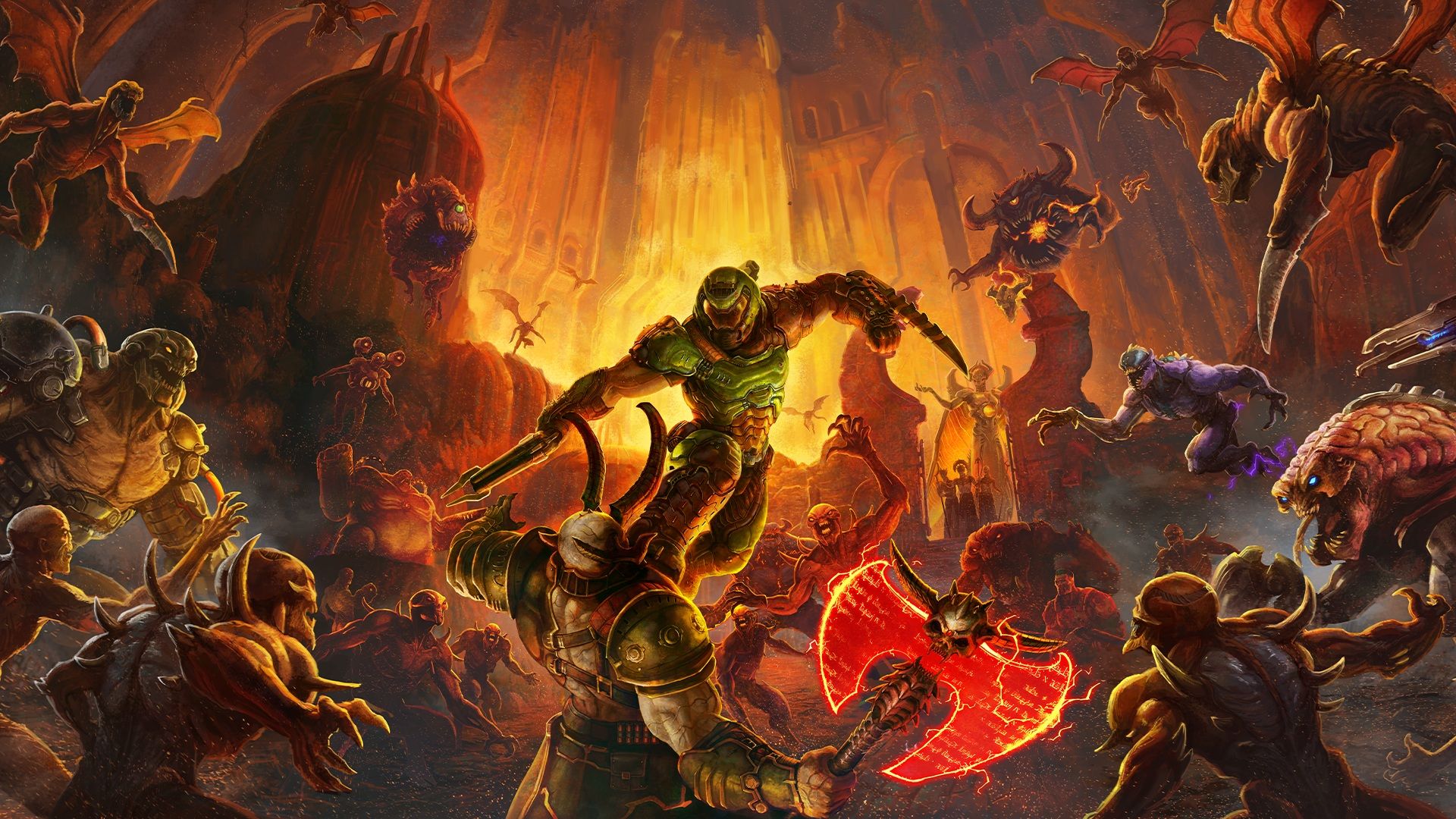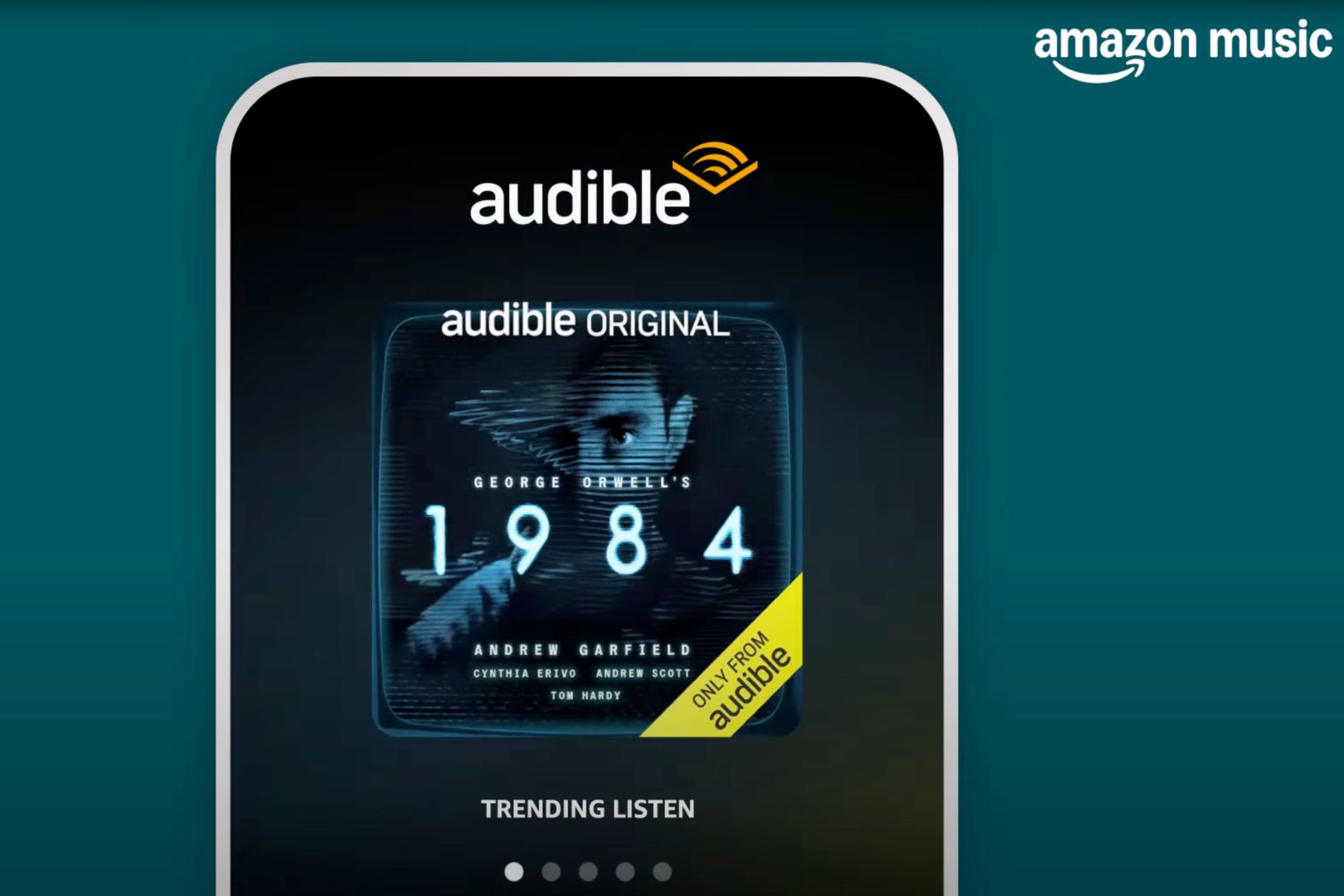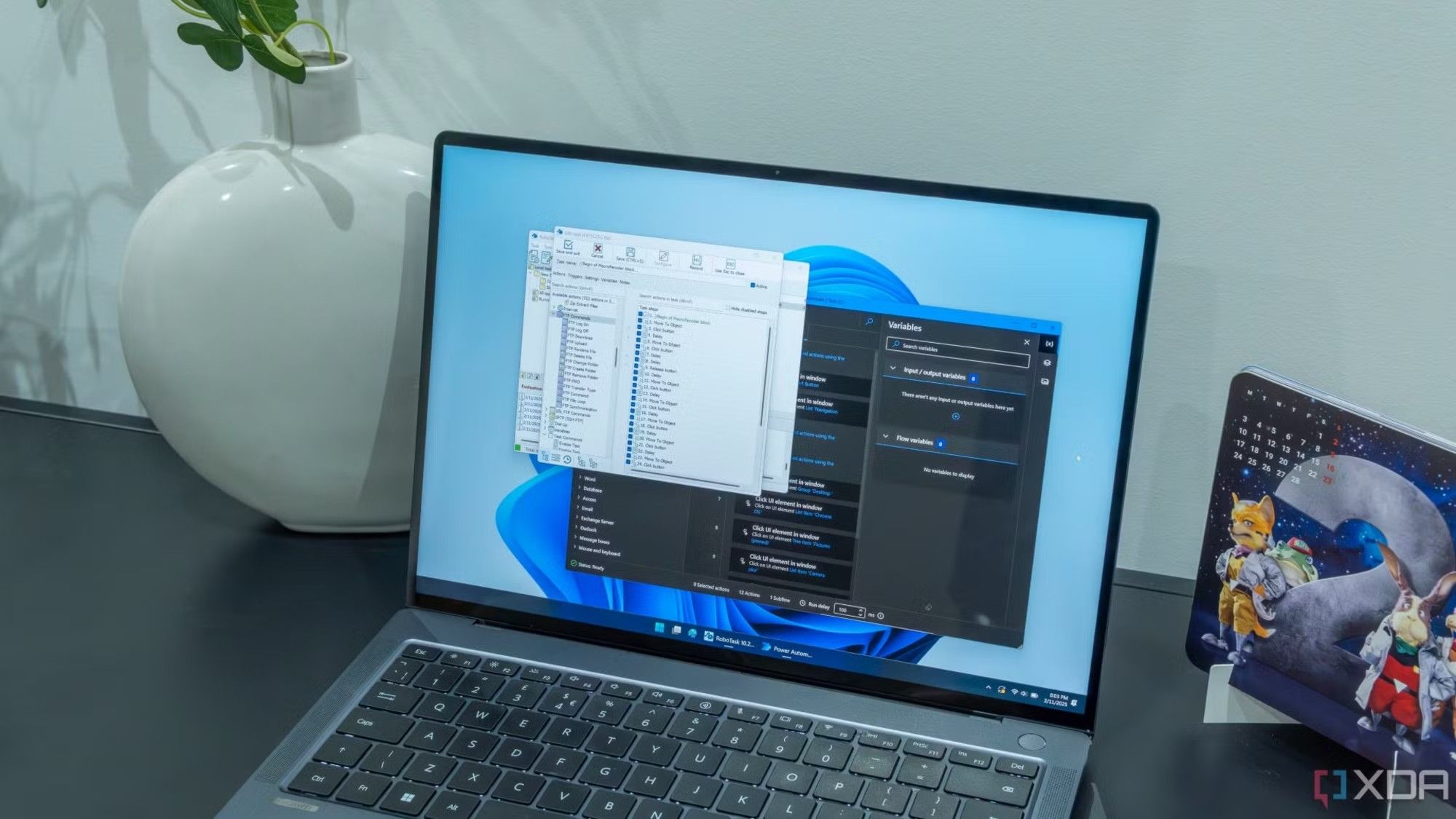



Doom has long been revered as the gold standard in FPS gaming, a reputation established since its groundbreaking debut in 1993. As one of the foundational titles in the first-person shooter genre, Doom didn’t just entertain— it set critical benchmarks for both gameplay and technical requirements, shaping the path of digital entertainment for decades. Its graphics engine pushed what personal computers could achieve, sparking a "Doom upgrade cycle" as fans rushed to upgrade their hardware— from graphics cards to CPUs— to experience the game in its full glory. The phenomenon repeated with each sequel and reboot, from Doom 3’s 2004 leap into 3D graphics and advanced lighting, to the kinetic, visually spectacular Doom (2016) and Doom Eternal (2020), which showcased the latest in rendering and physics technology.
Beyond its impact on hardware, Doom redefined how games are designed. Its fast-paced, skill-based movement and intricate level layouts inspired countless FPS games, becoming a template for what fluid combat and atmospheric design should feel like. Gamers and developers consistently reference Doom when evaluating new releases, turning it into a yardstick for innovation and polish. The community’s dedication is legendary; Doom is famously ported to everything from calculators to ATMs, underscoring its status as a universal benchmark.
Today, Doom’s legacy endures as new generations of gamers and developers look to its playbook. Game studios routinely cite Doom’s technical demands when designing engines or optimizing for high frame rates, while hardware manufacturers still use it—often via game benchmarks— to demonstrate the prowess of new GPUs and CPUs. The symbiotic evolution between games like Doom and hardware manufacturers has raised expectations: players now demand games that utilize modern ray tracing, instantaneous load times, and highly customizable settings. Meanwhile, the modding community thrives, with projects like Brutal Doom and new user-generated levels ensuring the series remains fresh while testing cutting-edge tools.
Expert commentary from industry veterans, such as John Carmack and Hugo Martin, frequently highlights how the "Doom standard" pushes the industry forward. As immersive technologies like VR and cloud gaming mature, Doom’s influence is likely to persist— serving as the benchmark for playability, performance, and innovation. In sum, Doom isn’t just a nostalgic icon; it’s the engine that keeps pushing both software and hardware horizons further, ensuring that the gold standard for FPS gaming continues to rise.

The rapid adoption of AI-generated voices is transforming the audiobook industry at a pace few anticipated. Major distributors, led by Audible and Apple, are investing heavily in artificial intelligence narrators capable of delivering vast libraries of books in record time. For publishers, AI-narrated audiobooks solve key production bottlenecks—significantly lowering costs and dramatically shortening time-to-market for new releases. This technological leap means that even small or independent authors can transform their written works into accessible audio, bypassing the previously prohibitive expense of hiring professional narrators and studio time.
Real-world data illustrates the scale of this change. In 2024, Audible introduced AI voices for select nonfiction and niche titles, quickly expanding the catalog to include thousands of works that might never have received audio editions otherwise. The number of audiobooks published annually has soared, and smaller publishers report double-digit percentage growths in their catalog offerings thanks to AI narration. This is particularly impactful for nonfiction, reference materials, and self-published works—segments often neglected by traditional audio production due to lower expected sales volume.
However, the shift has not been without controversy. Veteran narrators and actors warn that AI voices, while increasingly natural and expressive, lack the subtlety and emotional resonance that a skilled human can provide. Listeners sensitive to tone, inflection, and performance nuance often prefer human narration for fiction and memoirs, where character and emotion are paramount. Author Neil Gaiman, among others, has voiced concern about a potential loss of "humanity and soul" in literature if AI comes to dominate. Meanwhile, some publishers are experimenting with hybrid models—letting AI handle preliminary reading for reference material while reserving human performance for more nuanced texts.
From a practical perspective, the increased accessibility provided by AI narrators is a major win for inclusivity. Audiobooks can now reach more listeners, including those with visual impairments or reading difficulties, who previously faced limited options. Language support is broadening as well, with AI voices able to read in dozens of languages and dialects, helping bridge geographic gaps in content availability.
The future likely holds a bifurcated market: AI narration dominating utilitarian and niche content, while human narrators concentrate on performance-intensive genres. Listeners are already becoming more discerning, with platforms allowing users to filter by narration type. Ultimately, the rise of AI voices is democratizing audiobook creation and access, even as it prompts new debates about artistic authenticity and the evolving boundaries between technology and creativity.

Preserving cherished memories through digitizing old photographs is no longer a project reserved for experts or costly professional services. Thanks to major advances in smartphone cameras and specialized apps, scanning and archiving decades-old photo prints is now accessible to anyone with a mobile device. This shift is especially relevant given the growing societal interest in personal and family histories—consumers are increasingly seeking ways to safeguard analog keepsakes against the risk of physical decay or loss.
Modern photo scanner apps like Google PhotoScan, Photomyne, and Adobe Scan have democratized high-fidelity archiving. With automatic edge detection, glare removal, and one-tap color correction, these apps turn even average phone cameras into powerful image digitization tools. Users can scan stacks of photographs in minutes, with the apps often integrating directly with cloud storage and popular photo management software for effortless organization. Data from app stores indicate millions of downloads in the past year alone, with user reviews commonly highlighting the ease and satisfaction of finally preserving “unscannable” family albums.
The impact is more than technical. Historians, genealogists, and cultural organizations are encouraging families to digitize and share their photo archives, recognizing the broader value of personal heritage in community storytelling. Social media has become a showcase for digital nostalgia: Facebook groups, Instagram accounts, and digital scrapbooking forums foster the sharing of restored photos, sometimes with AI-driven colorization or facial recognition. This social aspect enriches the preservation movement, transforming what was once a solitary or professional endeavor into a collective, intergenerational conversation.
App developers continue to innovate, leveraging AI to further enhance old images—sharpening faces, restoring faded hues, or eliminating creases and blemishes with a tap. Many apps now include batch processing for large collections, voice annotation for storytelling, and even integration with genealogy tools. Security features are growing in importance, as users want assurance that their sensitive family photos remain private when using cloud-connected services.
For those with thousands of prints, best practices recommend working in batches and creating redundant backups, both locally and in the cloud. As scanning with a phone becomes not just a means of preservation but also a way to revive and share cultural memory, the act of digitizing photographs is shifting from an occasional project to a routine part of family digital hygiene. Future trends are likely to include 3D scanning of scrapbooks and objects, automated tagging based on facial or scene recognition, and continued growth of the digital nostalgia market. For anyone with a box of old snapshots, there’s never been a more empowering time to ensure those memories endure.

Shopping for a budget smart TV in today’s crowded market can feel overwhelming, with dozens of brands vying for attention using catchy promotions and technical jargon. Yet, not all inexpensive TVs are created equal— and distinguishing true value from empty marketing promises is a skill that savvy consumers are honing with increasing sophistication. The first step is understanding the features that matter most: display quality, user interface responsiveness, app ecosystem compatibility, and overall durability.
Display quality, often measured by panel type, brightness, and color accuracy, can vary widely even in the sub-$500 category. While OLED and QLED panels remain rare at lower price points, some manufacturers offer surprisingly good LED panels with full-array backlighting or improved color gamuts. Real-world reviews from sources like RTINGS, Consumer Reports, and online tech forums are invaluable here, often identifying which models outperform others in contrast, viewing angles, and real HDR capability. Shoppers are increasingly leaning on these reviews over flashy in-store demos, which can be misleading due to altered showroom settings.
Smart TV software is another crucial differentiator. Budget models historically struggled with sluggish menus and limited app support, but recent advances in platforms like Roku TV, Google TV, and Amazon Fire TV have democratized access to responsive and intuitive interfaces even at lower price points. Consumers now demand regular software updates and robust app stores— it’s wise to confirm that a TV offers these, as bargain bin brands may ship with outdated or unsupported systems. User forums are rich resources for information on long-term reliability and potential deal-breaking bugs.
Connectivity now goes beyond basic HDMI and USB—it includes Wi-Fi stability, Bluetooth support, and integration with smart home assistants like Alexa and Google Assistant. As streaming becomes the dominant delivery method, a TV’s ability to handle high-bitrate 4K HDR content without buffering is paramount. Many buyers are sharing their experiences online to help others spot Wi-Fi or firmware woes before purchase.
Finally, price is only one piece of the equation. Retailers and manufacturers are introducing transparent labeling and longer warranties to compete for informed buyers, and some now highlight repairability or sustainability as added incentives. The best approach? Cross-check specs and reviews, ignore brand hype, and look for real-world user feedback. As consumer expectations rise, the market is responding: many budget smart TVs now rival mid-tier models of just a few years ago, blurring the old line between "cheap" and "worthwhile."

With the official release of Windows 11’s Recall feature, Microsoft is signaling a major step forward in how users interact with and organize their digital workflows. Initially delayed to address security and privacy concerns, Recall is now available as a native productivity tool, designed to help users quickly revisit previous work, locate files, and reconstruct interrupted sessions with unprecedented accuracy. The feature leverages advanced indexing and contextual search, drawing on everything from application history to clipboard data, all while operating within strict privacy parameters set by the user.
Recall’s appeal lies in its practical ability to streamline daily routines. Professionals overwhelmed by information overload can now search for keywords, project names, or visual cues to instantly bring up past documents or relevant browser tabs. Early adopter feedback highlights significant time savings, with users reporting less reliance on manual bookmarks or memory-intensive searches. Microsoft’s business clients, in particular, are integrating Recall into collaborative workflows; teams use it to reconstruct decision paths, review timelines, and recover lost progress after system updates or crashes.
Security remains top of mind. Microsoft has implemented local-only data processing, granular controls over what is indexed, and optional encryption to address watchdog concerns. These enhancements answer prior criticisms of similar features that put sensitive data at risk, and the rollout is being closely watched by privacy advocates and enterprise IT departments alike. In response to transparency demands, Microsoft has published detailed documentation for both individual and organizational users, outlining best practices for configuring Recall to meet their security policies.
The launch of Recall also sets a new competitive baseline for productivity software. Industry analysts predict that major competitors, like Apple and Google, may be prompted to introduce analogous features in their respective ecosystems, spurring innovation across the sector. For end users, this means a likely cascade of enhanced organizational tools and smarter automation capabilities in coming years.
Ultimately, Windows 11’s Recall is more than a convenience—it’s a signpost for the future of digital productivity. As data proliferation continues, intuitive systems that help users manage, secure, and retrieve their digital assets will become indispensable. Recall’s debut marks Microsoft’s commitment to user empowerment and reflects a broader industry trend: increasingly intelligent operating systems designed to augment not only individual productivity but also organizational agility and digital trust.

Technology’s relentless march is fundamentally reshaping how we approach productivity, placing newly empowered users at the center of the work revolution. The sharp rise of AI-driven tools—ranging from language models like ChatGPT and voice assistants to workflow automation platforms—has enabled unprecedented efficiency in both individual and organizational pursuits. For those willing to adapt, the rewards are substantial: tasks that once ate up hours can now be completed in minutes, and the cognitive burden of managing information across platforms is noticeably lighter.
Take modern note-taking apps as an example: Notion, Obsidian, and Microsoft OneNote harness AI to anticipate a user’s needs, offering automatic categorization, summarization, and powerful search. Professionals in fields from research to journalism use these tools to capture fleeting ideas, cross-link references, and convert notes into actionable plans. Productivity experts like Tiago Forte, author of "Building a Second Brain," advocate for digital architectures that not only store information but surface it proactively—helping users stay in flow rather than get bogged down in digital clutter.
Meanwhile, leaders are discovering the value of empowering teams with these intelligent platforms. Employee training is focusing more on digital literacy, as mastering built-in features often reduces the need for costly, fragmented third-party apps. Tools like Microsoft Power Automate and Zapier allow even non-technical staff to automate repetitive tasks—think monthly reporting, invoice processing, or social media updates—freeing up creative energy for more strategic endeavors. The strategic imperative is clear: organizations that invest in digital upskilling and tool integration are building not just efficiency, but resilience and adaptability into their cultures.
Yet, the human side of productivity is not forgotten. Thoughtful integration of technology can reduce digital overwhelm, improve focus, and foster a healthier balance between output and well-being. Smart reminders, distraction blockers, and well-designed workspaces keep interruptions at bay and drive deep work. As a result, leaders are encouraged to cultivate a culture that is both innovation-ready and mindful—investing as much in people development as in platform adoption. In the evolving landscape, the edge belongs to those who use technology not just for speed, but for smarter, more meaningful work.
